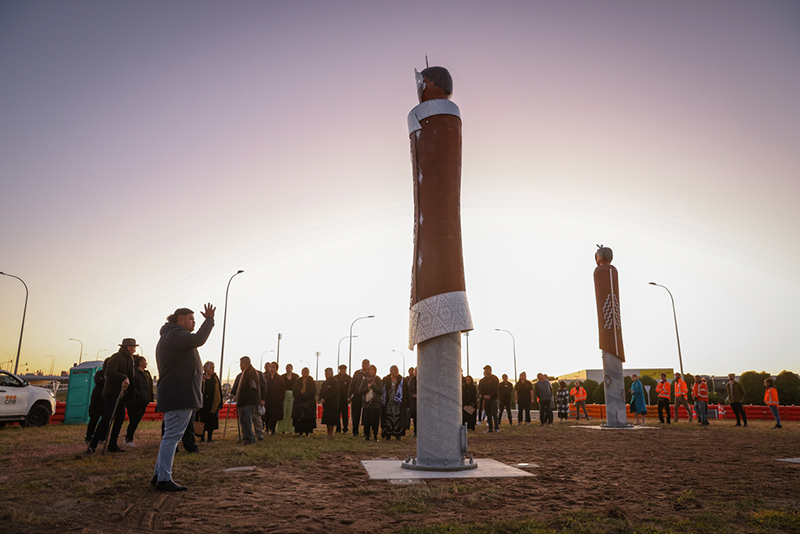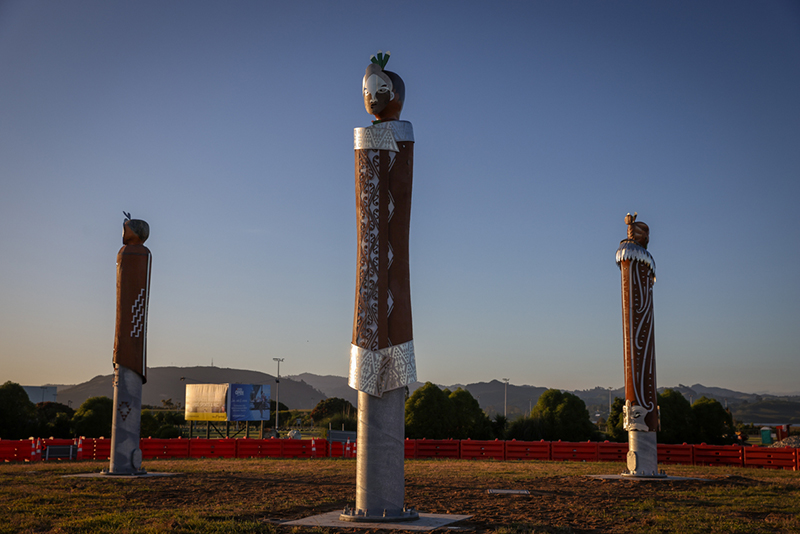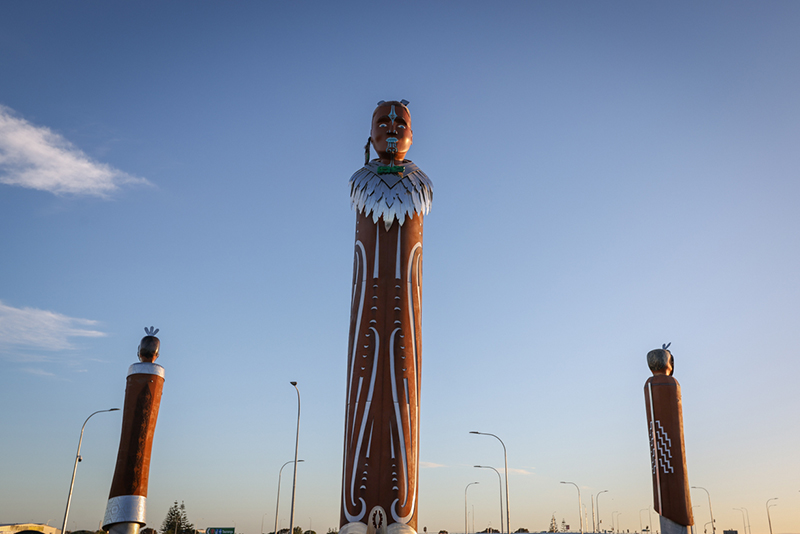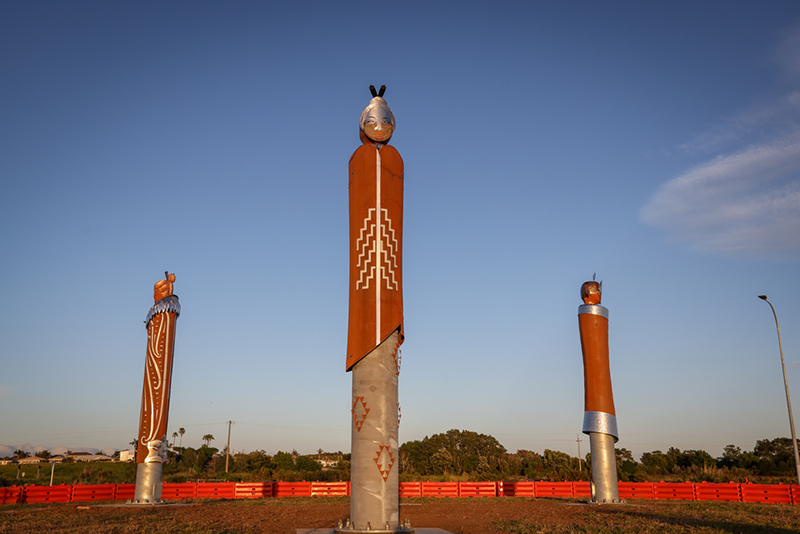
Artists: Linda Munn, Maraea Timutimu and Stu McDonald, supported by steel fabricators Longveld and carved by local kaiwhakairo/carvers led by Stu McDonald
People of Tauranga and visitors to the city are being welcomed by 3 striking pou whenua, representing 3 of the city’s tupuna wāhine/female ancestors.
The pou whenua represent wāhine Te-Aho-o-te-Rangi of Ngāi Tukairangi, Kahumoeangi of Ngāti Tapu and Kiritāwhiti of Ngā Pōtiki who will give people a metaphorical karanga, that first call of welcome, before they travel through this area.
“A karanga is steeped in tikanga and symbolises the mana wāhine, the power of women within the marae. It is a spiritual call that has been heard through generations of whānau across the country. Three tupuna wāhine are the first to welcome manuhiri/visitors to Tauranga Moana.”
All 3 tupuna wāhine lived on the estuary surrounding the roundabout – the location where they are now placed, each looking over their iconic landmarks Mauao, Pāpāmoa Hills, Rangataua and Te Awanui (Tauranga harbour) as the kaitiaki of the area.
Not many wāhine have been carved in places where traditionally carvings of male figures are seen. These pou whenua are giving local tupuna wāhine visibility, honouring the important role they played and continue playing in society. They are connected through whakapapa of the 3 neighbouring hapū and are looking out to their respective marae.
Each pou whenua stands 6 metres tall, on a central column, and is constructed using a combination of stainless, corten and galvanised steel and carved timber. They are adorned with corten steel korowai/cloak and other taonga/treasures, and the complex designs have been fabricated by metal fabricators Longveld and the busts carved by local kaiwhakairo/carvers led by Stu McDonald.
These 3 figures represent several important elements for the local hapū including the patterns and symbols they bear, the combined strength of the 3 hapū and the significant role wāhine had and still have in society. They stand as the predominant marker and mahi toi at the southern end of the Baypark to Bayfair Link project, located in the middle of the SH29A roundabout. There is no access to the artwork.

Te-Aho-o-te-Rangi, Ngāi Tukairangi, artist: Maraea Timutimu
Te-Aho-o-te-Rangi is the tupuna wahine, wife of Koraurau and mother of Hohepa Hikutaia. She made the ultimate sacrifice when crossing the moana between Otamataha and Whareroa in order to save her son in 1828. This is symbolised in her heart shaped taonga and her moana inspired kowhaiwhai border. Additionally, her triangle and taaniko patterned collar and hem are patterns seen in both marae at Hungahungatoroa and Whareroa.
Te-Aho-o-te-Rangi along with other Ngāi Tukairangi tupuna wāhine feature in the mōteatea Te tauaarai which was the first source of inspiration for this pou. Te-Aho-o-te-Rangi stands proudly and embodies her name connecting us to the sky and to our history.

Kahumoeangi, Ngāti Tapu, artist: Stu McDonald
Kahumoeangi was one of the Ngāti Tapu matriarchs, a high ranking chieftainess. Ngāti Tapu is named after her son Tapukino and two figures at the bottom of the pou represent her son and her husband. The collar piece features feathers, a notion back to her name Kahu – after the harrier hawk. It speaks about the presence of this kuia when you’re in your dreams, in a state of rest where she’s always floating above you.
The pattern on the korowai represents movement and about being present amongst our people and the people who drive past this area.

Kiritāwhiti, Ngā Pōtiki, artist: Linda Munn
Kiritāwhiti is the daughter of Tamapahore, the founding chief of the Ngā Pōtiki iwi and its 12 hapū. Tamapahore is of historical significance for Tauranga Moana and Ngā Pōtiki during the time of Te Heke o Mataatua.
The pou whenua for Parewaitai is designed around cultural elements that are found at Tahuwhakatiki Marae and represents a Poutama design found at the whare. Poutama talks about the journey of attaining knowledge and elevating others to do the same as well. The bottom of the pou features the design of a pāpaka – one of the many kaitiaki of Ngā Pōtiki, especially te tāhuna o Rangataua.